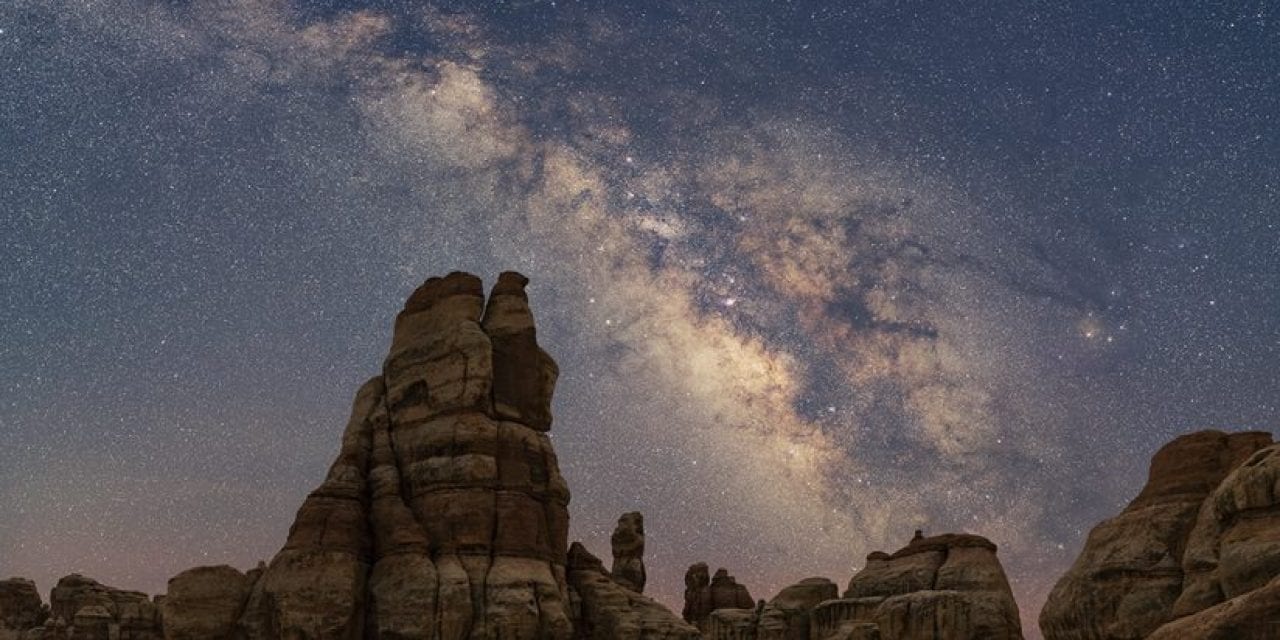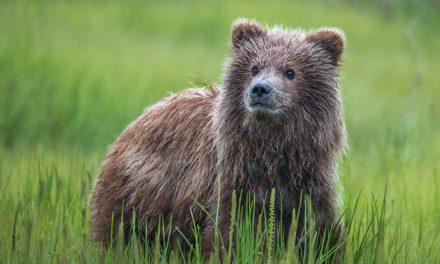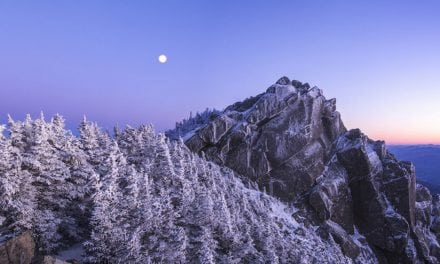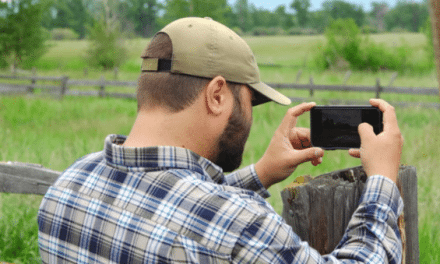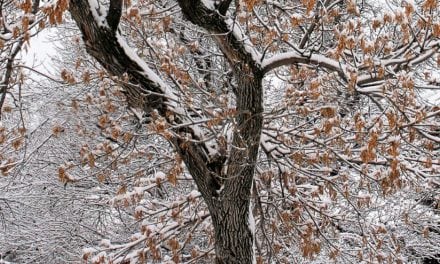Learning the basics of night landscape photography will open up a whole universe of photographic possibilities. Combine your new knowledge with solid preparation, the right gear and good field technique, and you’ll able to photograph the Milky Way, star trails, meteor showers, lunar eclipses, the aurora and the landscape by moonlight.
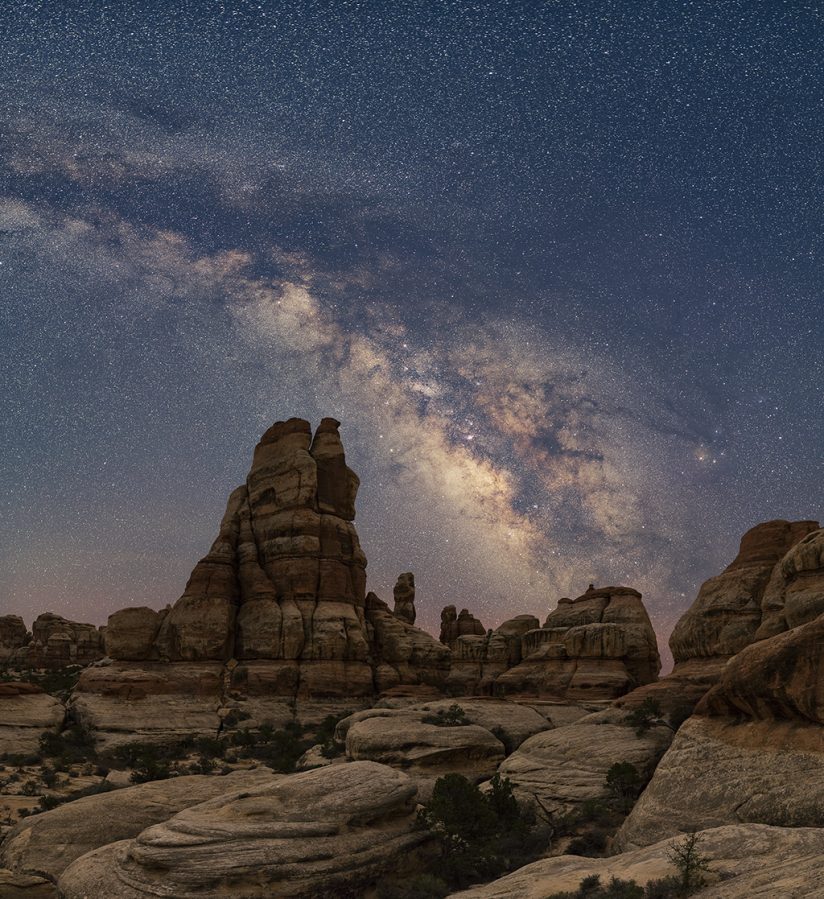
Milky Way near the Joint Trail, Needles District, Canyonlands National Park, Utah. Exposure time for Milky Way images (in locations far from city lights) is 30 seconds at ƒ/2.8 and ISO 6400.
Preparation begins with deciding what type of nighttime landscape photos you want to make, then deciding when and where to go. Regardless of your nocturnal quarry, you’ll have better luck if you get as far away from city lights as possible.
Basic Timing Considerations
The best time to shoot the Milky Way and meteor showers is when the sky is fully dark. The sky reaches its darkest point at astronomical dusk, when the sun is 18 degrees below the horizon, roughly 1.5 to two hours after sunset at the mid-latitudes; it starts to lighten again at astronomical dawn. Both the Milky Way and meteors are quite dim, so you’ll want the darkest possible sky as a background to help these faint objects stand out, which means shooting when the moon is below the horizon.
By contrast, I’ve photographed star trails and the aurora successfully under all phases of the moon. Moonlit landscapes are easiest to shoot under a full moon, and of course the moon is always full during a lunar eclipse. Sun Surveyor for iOS and Android smartphones is my favorite app for data on astronomical dusk and dawn, as well as data on rise and set times and azimuths (compass bearings) for the sun, moon and the galactic center—the most photogenic part of the Milky Way. PhotoPills (iOS and Android) and the Photographer’s Ephemeris (iOS, Android and desktop) are also good sources.
Planning For The Weather
Clear skies are essential for most night landscape photography. The exception is landscapes lit by the full moon, which often benefit from the presence of clouds. My favorite site for weather forecasts is weather.gov. Enter the name of the city closest to your shooting location in the search box at the top of the home page. Scroll down the page to the map, then click on the location of your shoot. The site will display a forecast for an area of roughly 4 square miles centered on the point you clicked. These point forecasts are particularly valuable in mountainous country because the weather in the closest city will be radically different from the weather high on a peak.
Look below the map, and you’ll see a link to an hourly forecast. In addition to useful predictions for temperature, wind speed and chance of precipitation, you’ll find a forecast for the percentage of the sky that will be covered by clouds. ClearDarkSky.com also provides forecasts of sky cover.
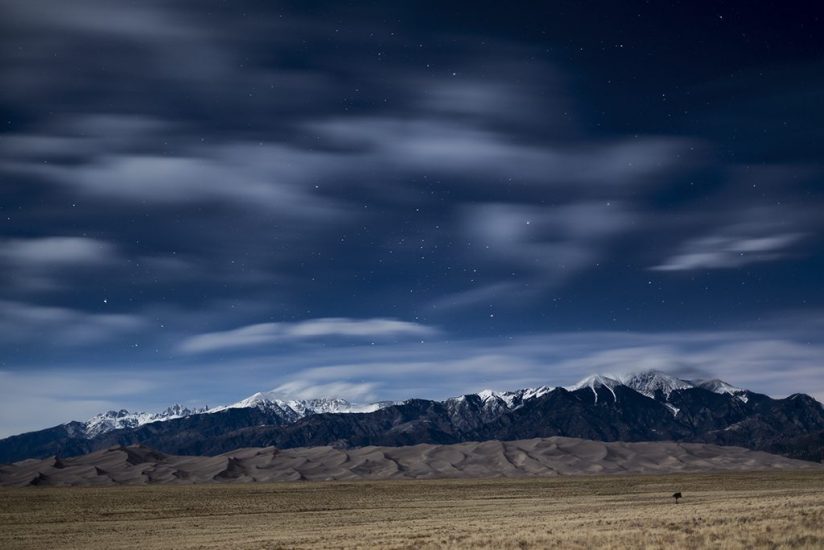
Sand dunes and the Sangre de Cristo Range by moonlight, Great Sand Dunes National Park, Colorado. Moonlit landscapes can benefit from the presence of clouds to add interest to the sky.
Essential Gear & Safety
It’s surprisingly chilly standing around next to a camera in the dark. A 40-degree night feels much colder than a 40-degree day because you have no sunshine soaking into your clothing. Be sure to bring plenty of extra clothing, including windproof layers for both your legs and your torso. Snacks will keep your body fueled, and a thermos of hot coffee or tea will taste like the nectar of the gods around 3 a.m.
There is no such thing as gloves that are both thin enough to let you push your camera’s buttons easily and thick enough to keep your fingers toasty in sub-zero weather. My solution is to wear heavy gloves and bring an unsharpened, new pencil with a good eraser. Drill a hole through the leaded end, tie a thin piece of string through the hole, and hang the pencil from your tripod. It’s easy, even with heavy gloves on, to use the eraser end of the pencil to push a button. Use your gloved thumb or forefinger to spin the dials.
Many people find the prospect of night landscape photography intimidating. To dispel those fears, visit the area where you plan to shoot in daylight. Look for hazards that might be less obvious at night, such as cliff edges, old mine shafts or the slippery banks of streams or lakes. Pay close attention to landmarks along the trail leading to your location. Remember that you don’t have eyes in the back of your head. The trail will look very different on the return trip than it did when you were hiking to your location. Turn around periodically during the hike to your location and memorize what key junctions and landmarks will look like when heading back to your car. Bring a companion along on your shoot, and let someone know where you’re going and when you plan to be back.
Bring trekking poles when hiking at night. Becoming a quadruped again will help prevent skinned knees and sprained ankles. Use a headlamp instead of a flashlight so your hands are free for trekking poles or camera gear. Many headlamps offer both white and red LEDs. I always use the brightest white LED for hiking and setting up the shot. When I’m ready to start shooting, I switch to the red LED and turn the brightness way down to let my eyes adapt to the dark. The key to preserving your night vision is to use a very dim light. A bright red light is worse than a dim white light. Full dark adaptation takes about 30 minutes.
The best lens for your first foray into the night is a fast, ultra-wide-angle optic such as a 14mm or 16mm f/2.8, or a wide-angle zoom such as a 14-24mm f/2.8 or 16-35mm f/2.8. Recent cameras have better high-ISO capabilities than older ones. You’ll want a camera body that offers ISOs of at least 6400, preferably higher. A solid tripod is another must for night photography.
Basic Technique For Night Landscape Photography
Your first challenge is focusing the lens at infinity. You’ll probably be shooting wide-open, which means depth of field will be shallow and focus will be critical. Turn off auto-focus completely, even if you use rear-button focus. It’s way too easy to accidentally hit that button with a gloved thumb and not notice that you’ve ruined your focus.
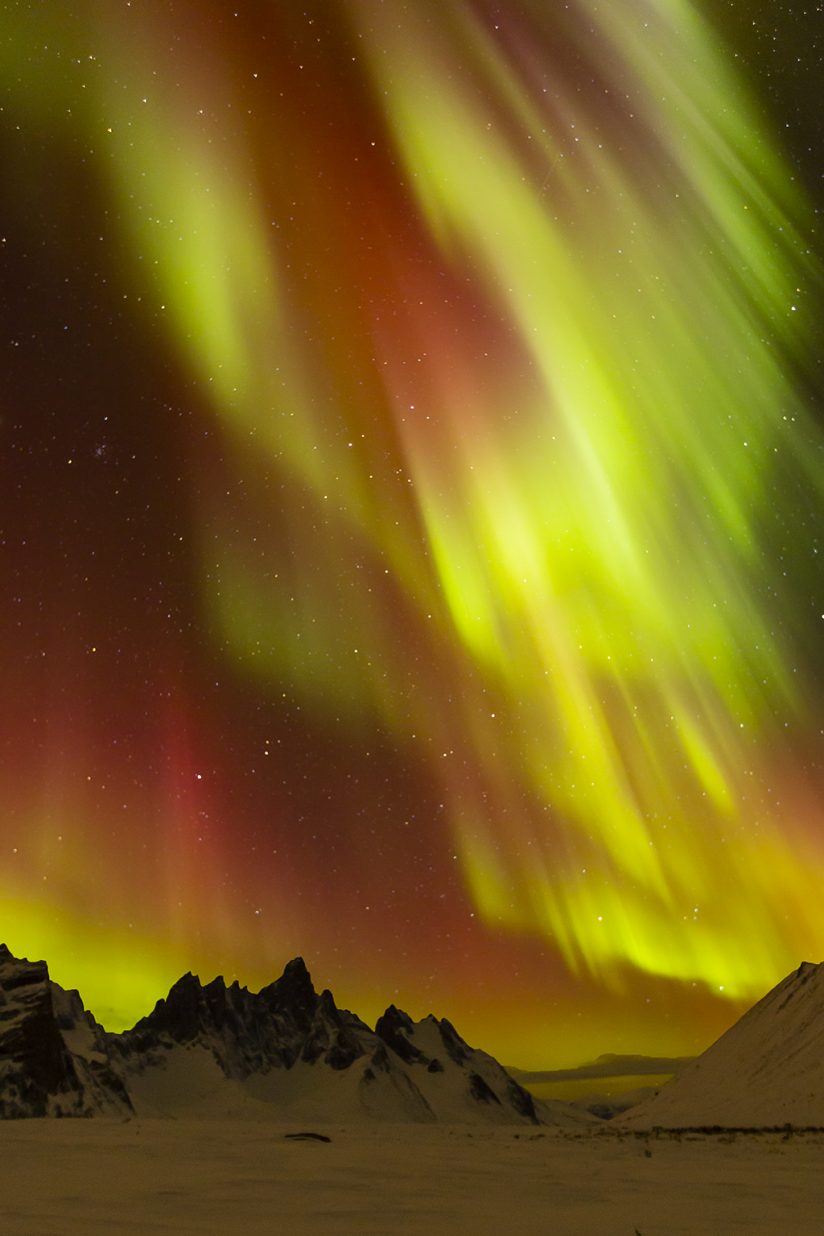
Aurora over Tombstone Mountain, Tombstone Territorial Park, Yukon Territory, Canada. A basic starting point for aurora photos is a 10-second exposure, but the right exposure time can vary significantly, so trial and error is required.
With few exceptions, you can’t simply rack the lens to the physical stop because most modern lenses allow you to focus past infinity. Nor can you simply set the index mark on the lens to the infinity mark and assume you’re critically focused. The easiest solution is to focus the lens at infinity in daylight, then tape the lens with gaffer tape, which doesn’t leave a residue. If you must focus at night, point the lens at a bright star or planet, enlarge the view to about 10x (turn on Live View if shooting with a DSLR to do this) and manually focus on the star. Then shoot a test frame, being sure to include a bit of skyline in the frame. A slightly out-of-focus star just looks like a bigger star, but an out-of-focus skyline will be obviously blurry. Then tape the lens and test again.
Exposure at night is a matter of (educated) guess-and-check. Your meter will be useless; use manual exposure mode and ignore the meter. For most night images, you’ll want to keep the stars reasonably round, which means your shutter speed must be short enough to prevent the stars from becoming streaks due to the rotation of the earth.
One convenient way to calculate the maximum shutter speed is the “500 rule:” divide 500 by the focal length of the lens to get the maximum shutter speed. For example, if you are using a 20mm lens, you would divide 500 by 20 and get 25 seconds—the maximum shutter speed to keep stars reasonably round. Note that this rule is a compromise between two goals: keeping stars round and keeping noise under control. If you enlarge the image to 100 percent, you will see that the stars have made short streaks. You can use a tighter standard for star roundness (for example, use 200 instead of 500 when dividing by the focal length) and compensate for the shorter shutter speed by using a higher ISO, but the price will be more noise.
Exposure Settings For Night Landscape Photography
In a dark-sky location, far from city lights, the correct exposure for the Milky Way is 30 seconds, ƒ/2.8, ISO 6400. You’ll need a 16mm or wider lens to use that long of a shutter speed without obvious star trails. Those settings will give you a correctly exposed Milky Way straight out of the camera. Some recent cameras may give slightly better results if you use a much lower ISO, such as 1600, then correct the exposure in processing software. These cameras are said to be ISO-invariant. Test your own gear to see what gives you the best results.
My standard Milky Way exposure will render the land very dark. To get better detail in the land, I usually shoot two frames, exposing one for sky, the other for land, then put the two frames together in Photoshop. As a rule of thumb, the correct exposure for the land in a Milky Way image (assuming no snow on the ground) is about two stops brighter than the correct sky exposure, or about two minutes, ƒ/2.8, ISO 6400.
An intervalometer will let you set exposures longer than 30 seconds. This is much more convenient than using bulb mode and timing your exposures with your watch or phone. Using an intervalometer also allows you to change exposure without touching the camera and potentially causing the tripod to move in between exposures, which would prevent the images from aligning perfectly.
The exposures for other night subjects will vary.
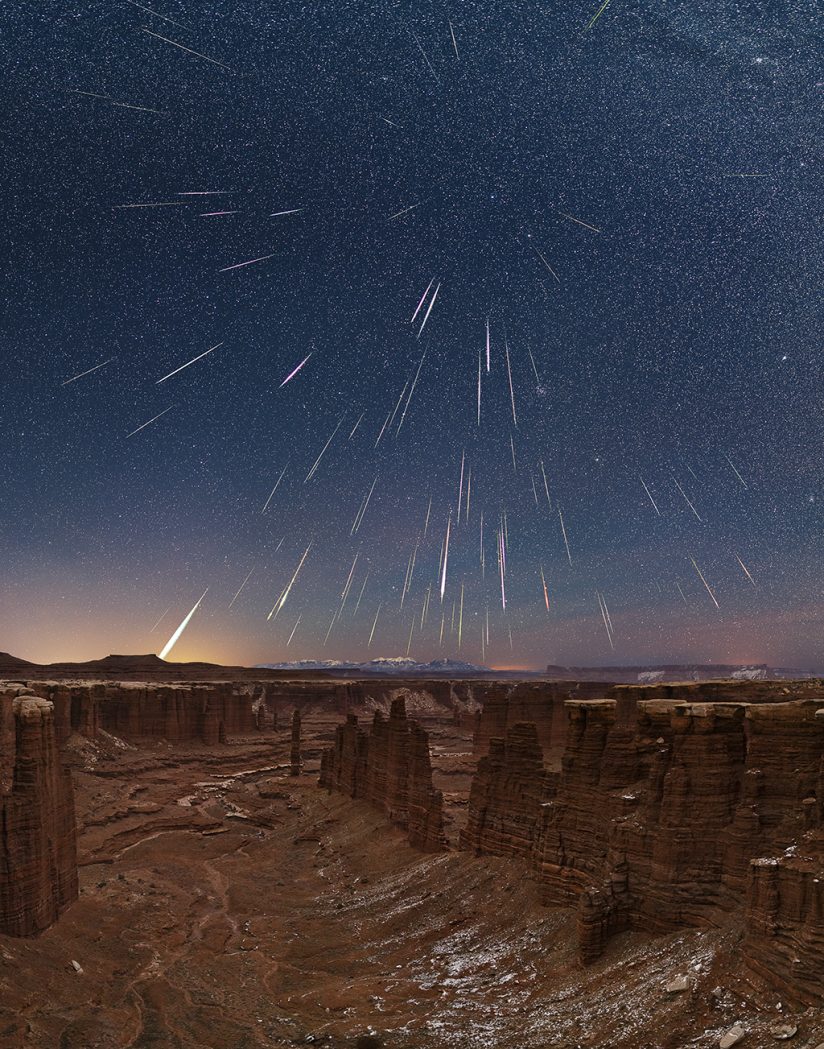
Geminid meteor shower over Monument Basin, Canyonlands National Park, Utah. This composite image shows 86 meteors captured over 8.5 hours.
I usually use 30 seconds, ƒ/2.8, ISO 3200 for capturing meteors.
My starting-point exposure for the aurora is 10 seconds, ƒ/2.8, ISO 3200, but the correct exposure can vary by several stops in either direction from those initial settings.
The correct exposure for the moon itself during a lunar eclipse also varies widely, from about 1/125 sec., ƒ/11, ISO 200 for the fully illuminated moon, to eight seconds, ƒ/8, ISO 1600 at deepest totality. Moonlight varies in brightness depending on the phase of the moon and the moon’s altitude (angular elevation about the horizon).
For a landscape lit by a full moon high in the sky, start with 30 seconds, ƒ/2.8, ISO 400 and adjust as needed. This exposure will render the moon itself as a blown-out blob, so you’ll probably want to exclude the moon from your composition.
In the film era, you could shoot star trails by setting your largest aperture and opening the shutter for hours. Unfortunately, using the same technique with a digital camera will typically cause unacceptable noise. The solution is to shoot many shorter exposures back-to-back, then put all the frames together using a free or low-cost star-trails program like StarStaX. On a moonless night, I generally choose an aperture between ƒ/2.8 and ƒ/4 and an ISO between 200 and 400. Your shutter speed can be as long as your camera allows without generating excessive noise; for a Canon EOS 5D Mark IV, that’s four minutes. I use an intervalometer to set the exposure and specify the number of frames. Your exposures will need to be shorter on nights when the moon is bright (50 percent or more illuminated). On nights with a moon, shorter exposures reveal more stars. On nights with a full moon, use exposures of 15 to 30 seconds. Limit exposures to one or two minutes when the moon is 50 percent illuminated.
Once your eyes are dark-adapted, the image on your LCD will give you a misleading impression of the level of detail in the land. Turn down the brightness of your LCD to compensate. As always, your histogram is your best guide to correct exposure.
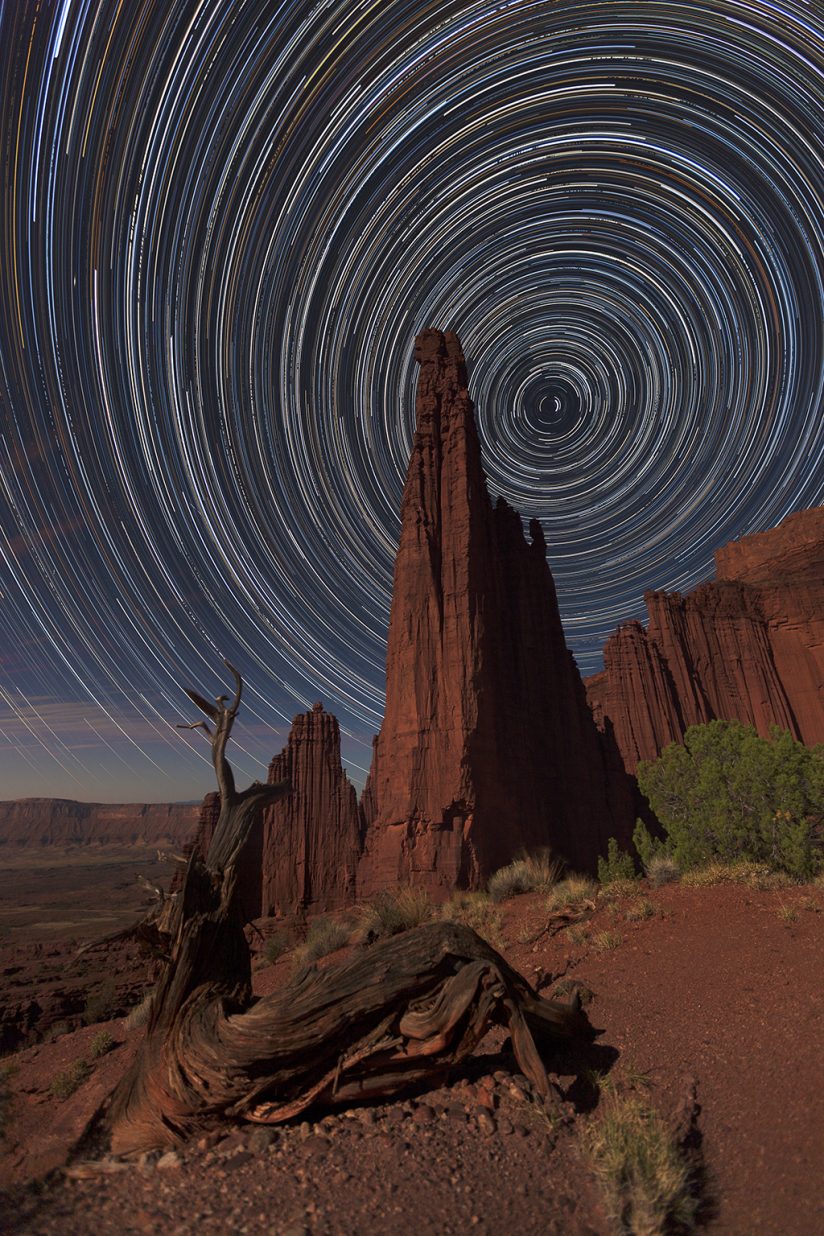
Star trails over the Titan, Fisher Towers, Utah. For star trail photos with less noise, shoot many shorter, consecutive exposures and combine them using software such as StarStaX.
I always use daylight white balance for my night landscape photography because I want to preserve the colors of the stars and planets that I see when I’m dark-adapted. Lightroom and Photoshop ignore in-camera high-ISO noise reduction settings. I leave high-ISO noise reduction on only because it makes the JPEG-rendered preview on my camera’s LCD look a little cleaner.
Long-exposure noise reduction works by making a second exposure of the scene with the shutter closed, then subtracting the noise in the dark frame from the actual image data. It’s effective, but it doubles the time to take each picture, so I turn it off.
Composing at night requires trial and error, since you probably won’t be able to see much through the viewfinder. Be sure to level the camera left to right using the level on your LCD. Crooked horizons are a common mistake at night. Shoot a test frame, examine the image on your LCD, make adjustments and try again.
To compose more quickly—without having to wait 30 seconds to see each test shot—crank your ISO up to 25,600 temporarily and reduce your shutter speed to match. Once you’ve perfected your composition, lower the ISO, adjust the shutter speed and make the shot.
Throughout your shoot, check your images periodically on your LCD. In addition to verifying your composition, double-check sharpness and exposure. Tape can get dislodged, and wide swings in the temperature of the lens can change the focus point slightly. It’s easy to bump a camera dial in the dark and accidentally change your aperture or shutter speed.
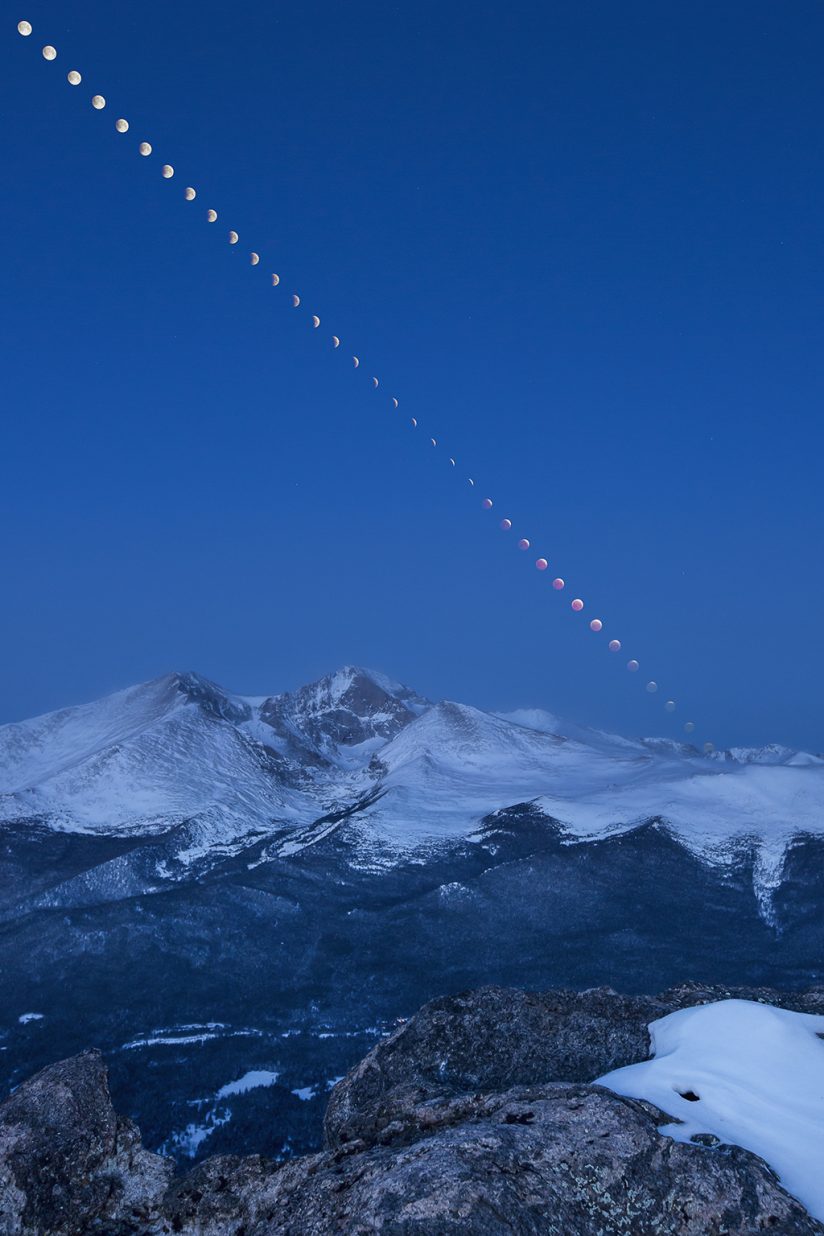
Lunar eclipse over Longs Peak and Mt. Meeker, seen from the summit of Twin Sisters, Rocky Mountain National Park, Colorado. The correct exposure time for a lunar eclipse can vary widely, from a fraction of a second to several seconds.
If your images look soft after checking focus, inspect the front of the lens. Condensation on the front element will ruin every shot. I carry old-fashioned paper lens tissue to dry the front element. Polyester microfiber cleaning cloths are great for cleaning off smudges and fingerprints, but they don’t soak up moisture well.
One final tip: Batteries fail more quickly in the cold. I always keep a couple of spares warm in an inside pocket.
I hope this brief introduction to night landscape photography will inspire you to start exploring this exciting genre. For a thorough discussion of all facets of night photography, please see my book Dusk to Dawn: A Guide to Landscape Photography at Night, published by Rocky Nook. Then grab your gear and go. If you’re well-prepared, your photographic adventures under starry skies will be filled with wonder.
The post Night Landscape Photography appeared first on Outdoor Photographer.

